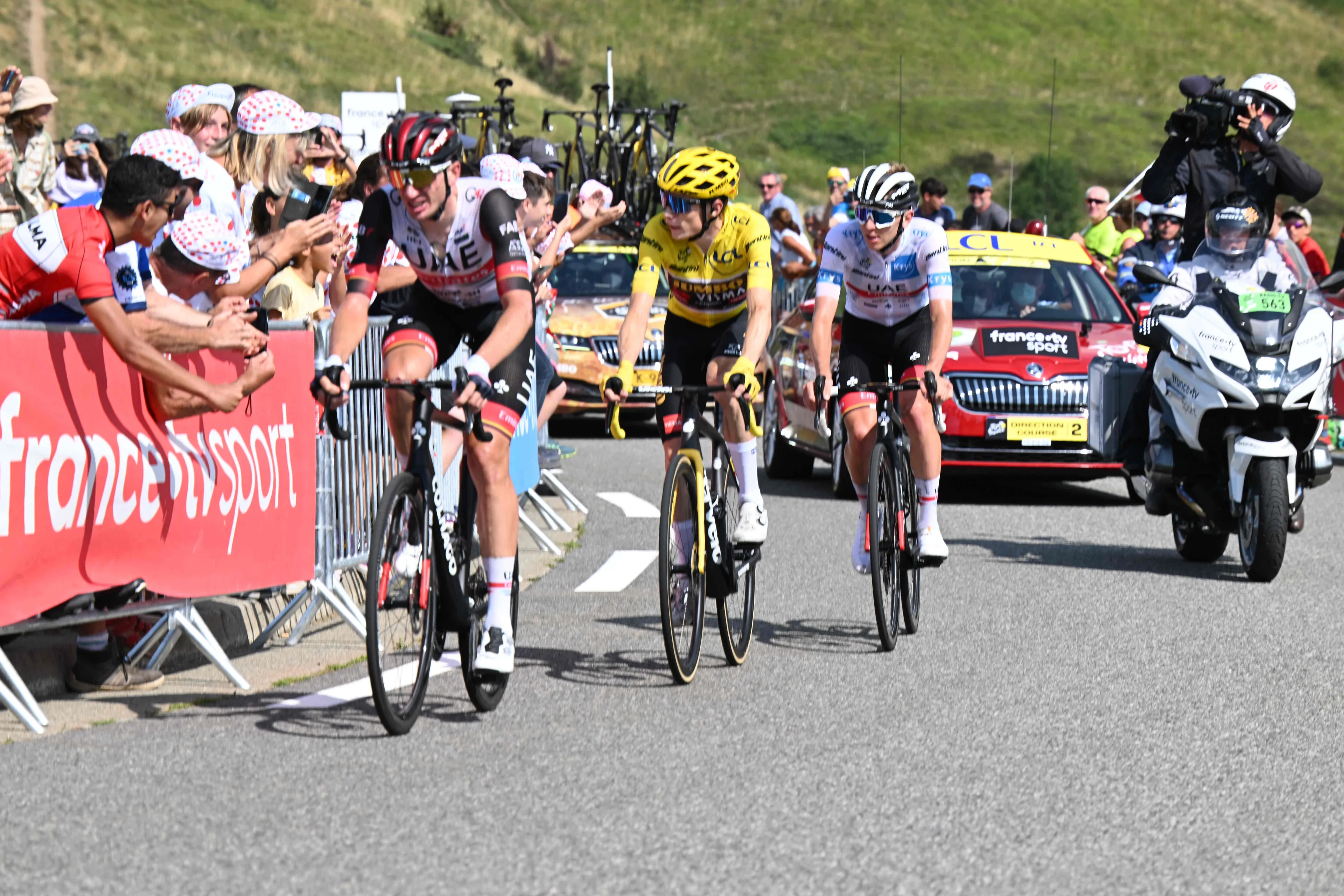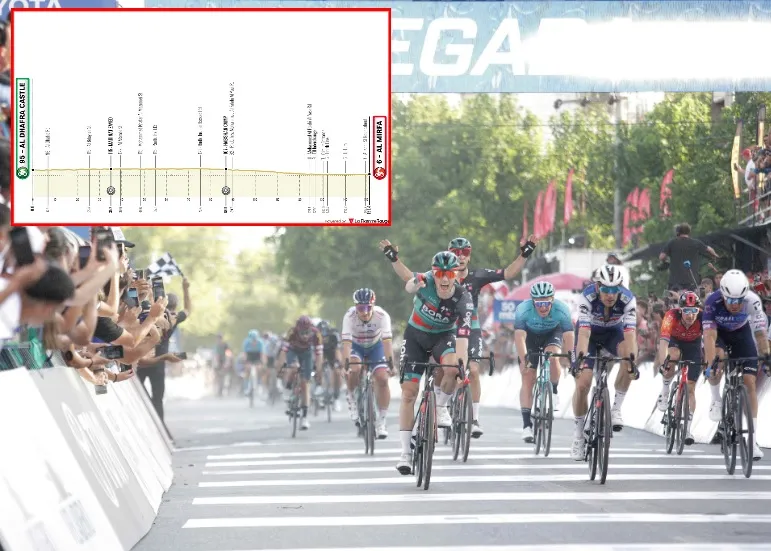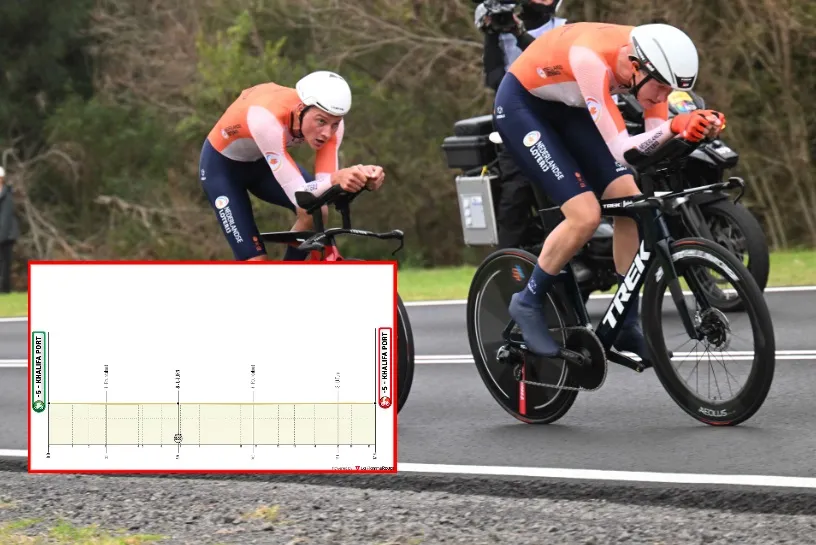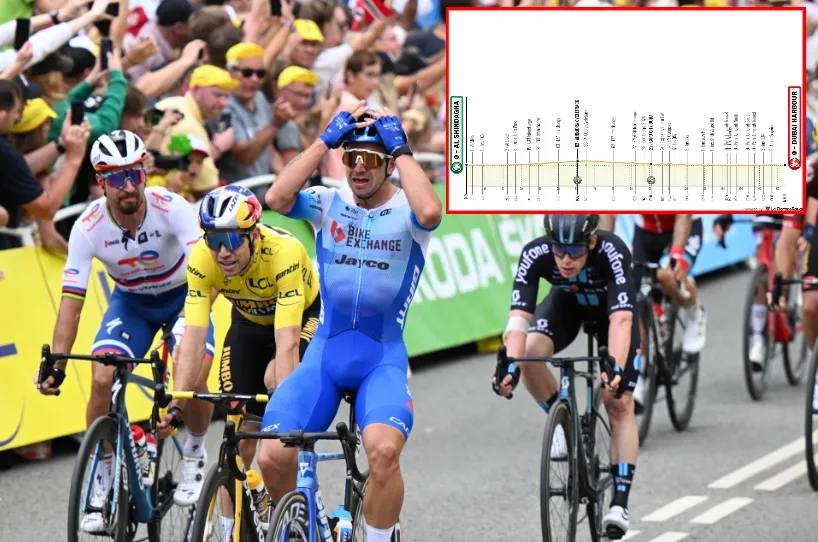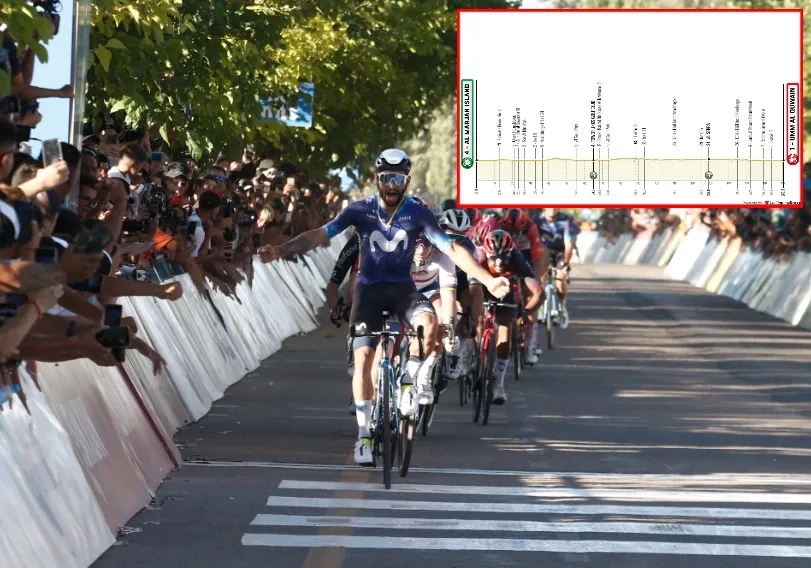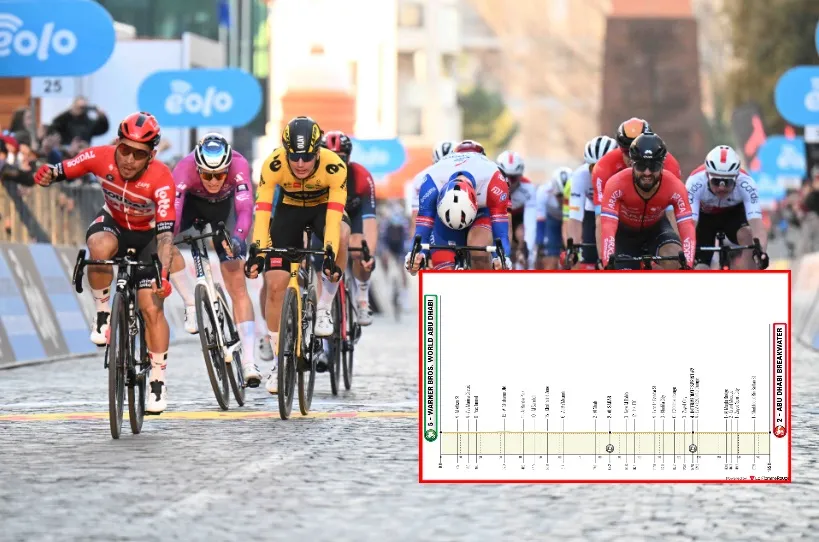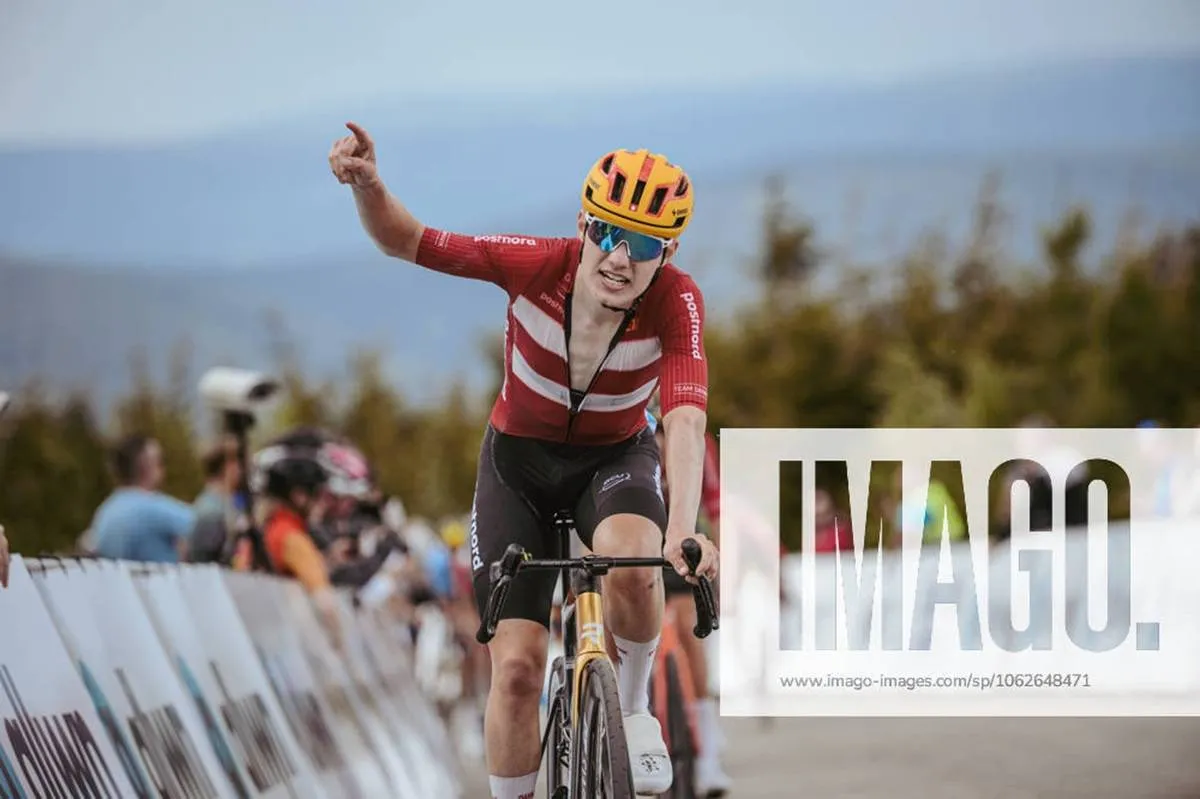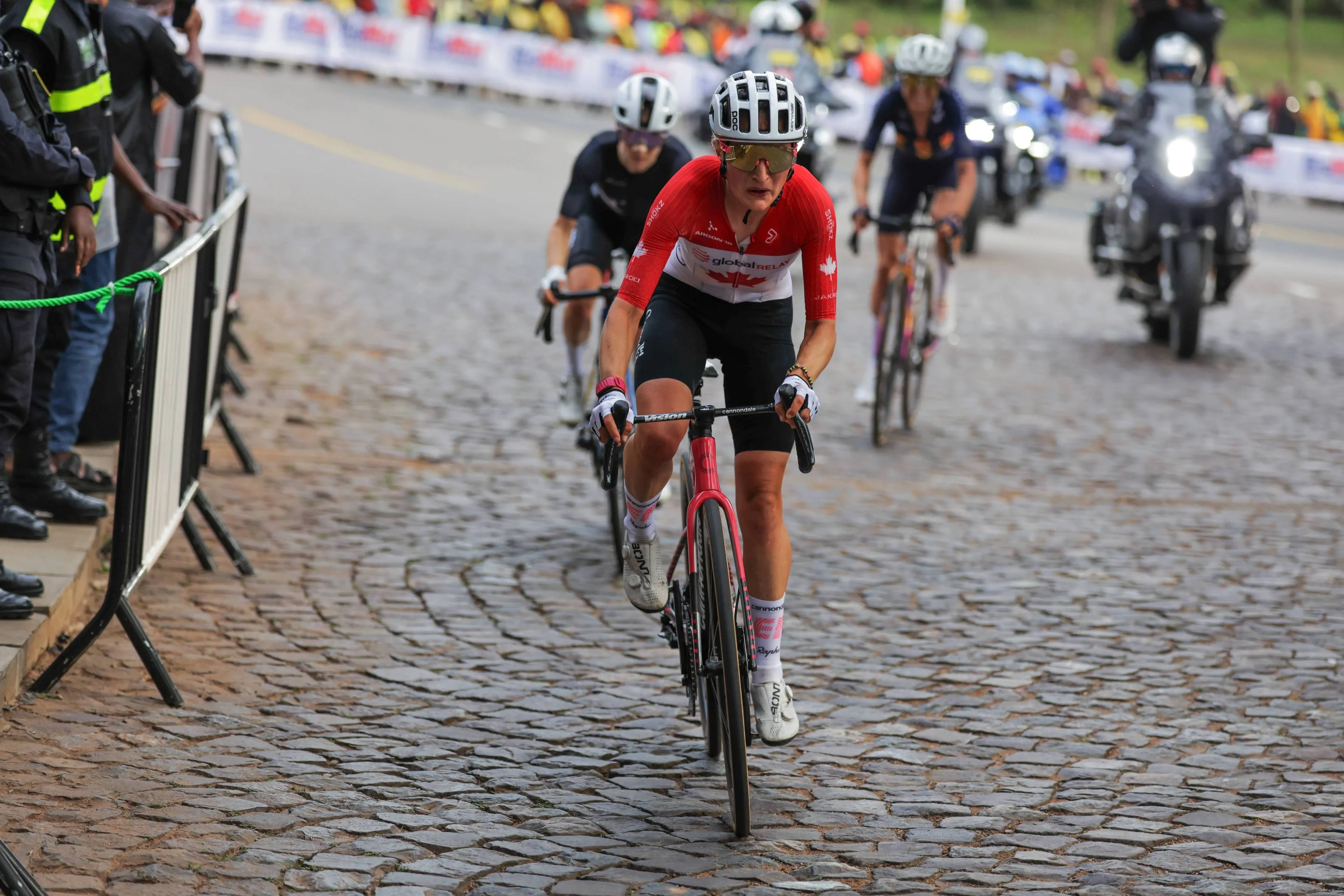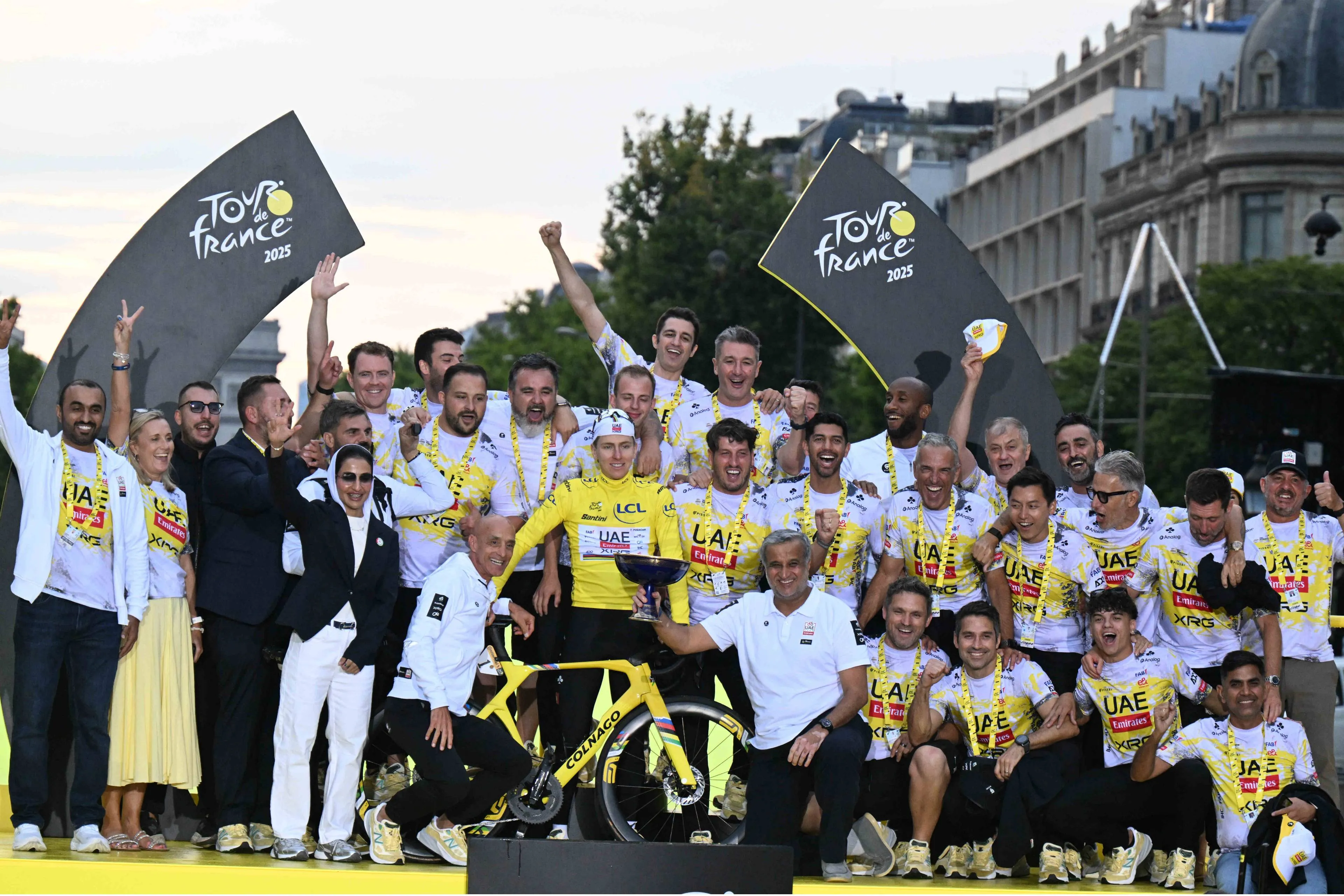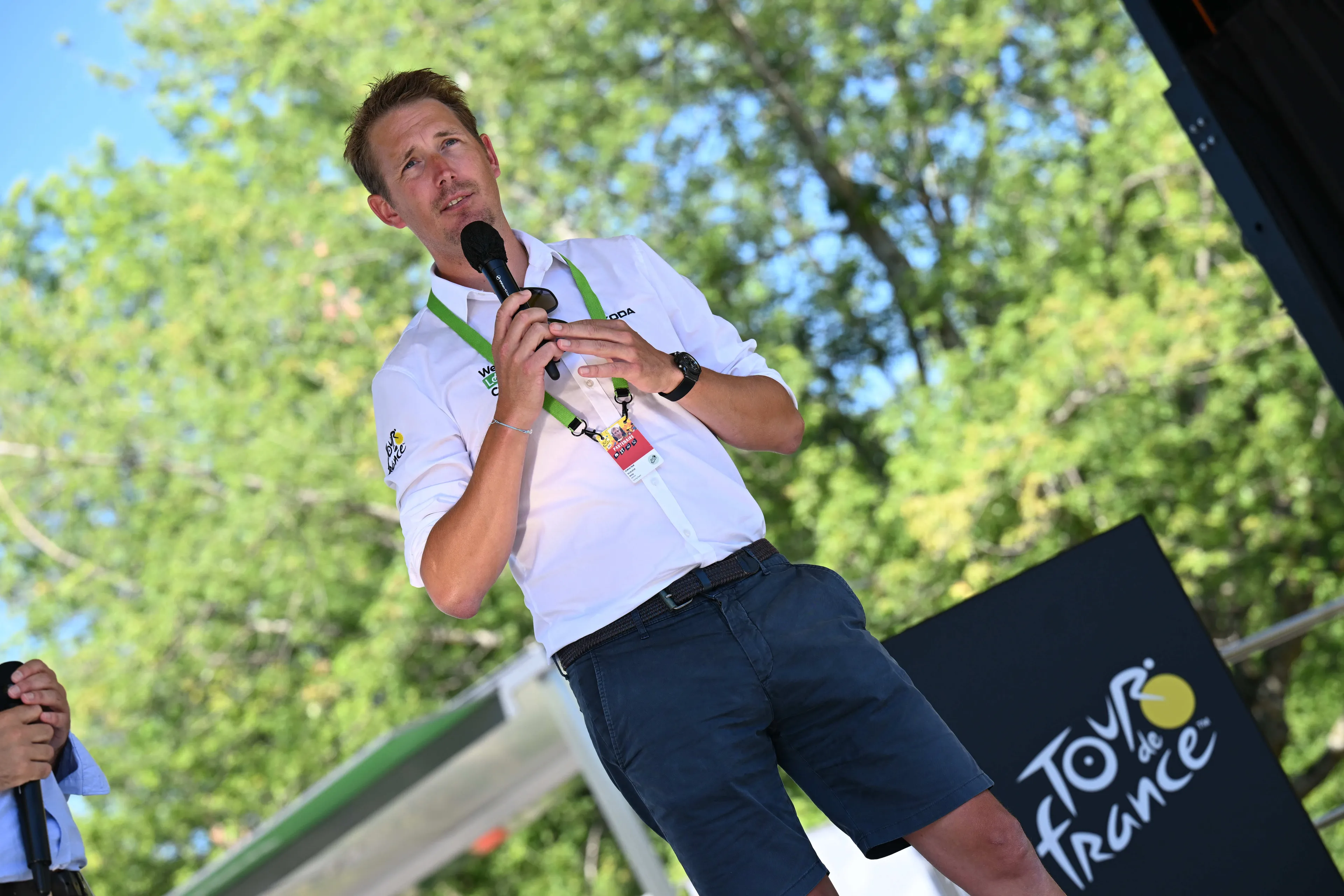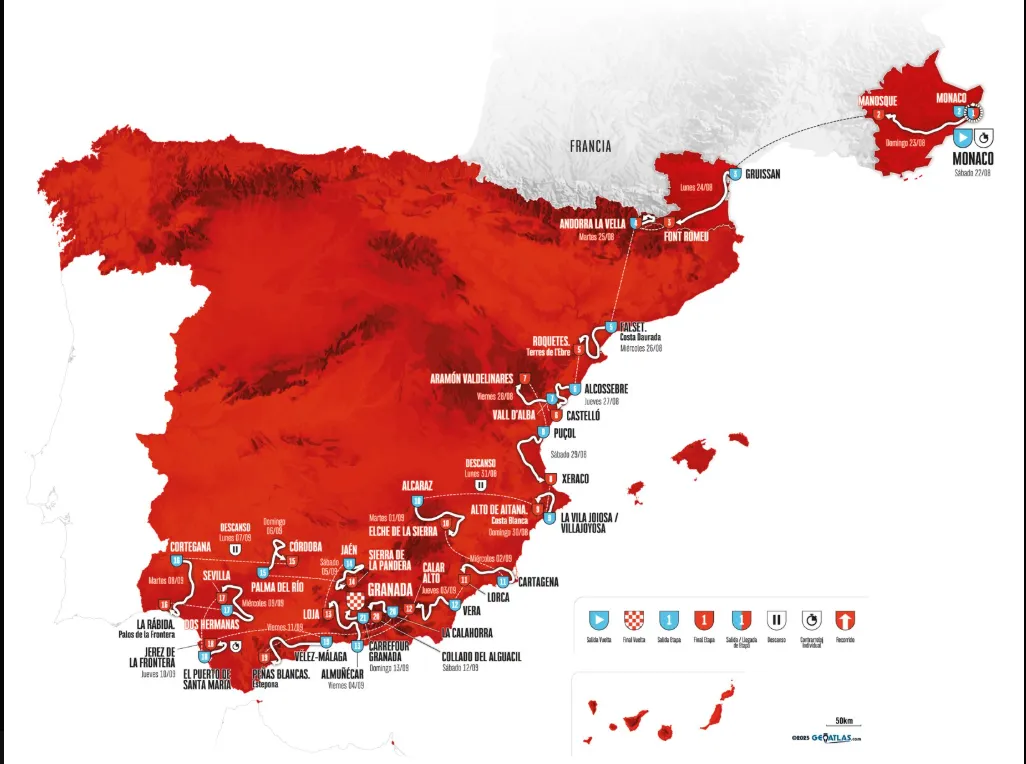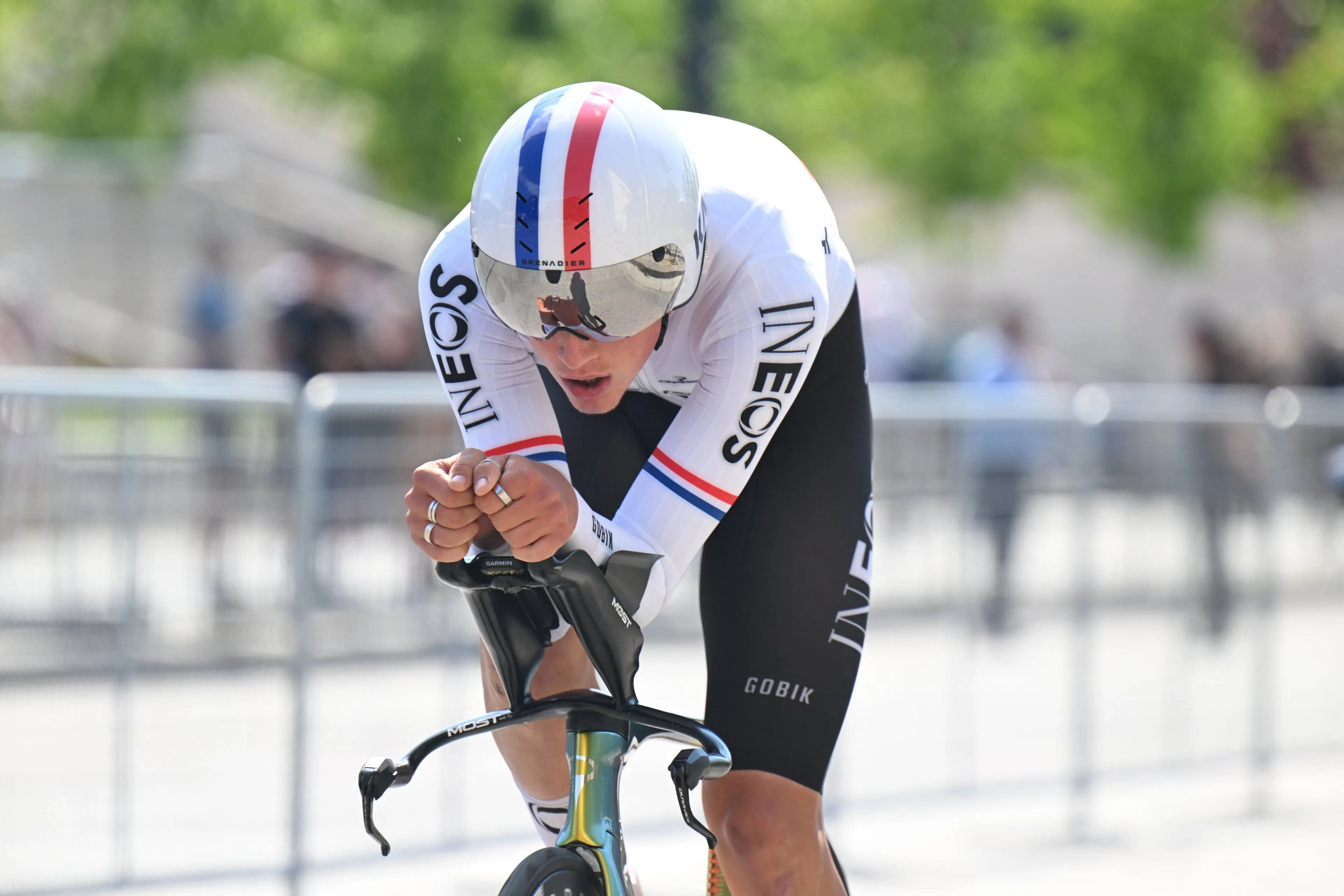
For several years now the UAE Tour has proven to be one of the biggest early-season tests for the peloton. A World Tour race, it will be taking place from the 20th to the 26th of February and as every year it will feature a star-studded field of climbers and sprinters.
The race will consist of seven stages this year. Four of them will be pan-flat and perfect opportunities for the sprinters who will have plenty chances to fight for a prestigious win. Stage two will be a team time-trial, as the discipline re-emerges in 2023, and stages three and seven (the final day) will have summit finishes in the traditional climbs of the Jebel Jais and Jebel Hafeet.
Click
here to create your own team for the Fantasy Spring Classics Men. 1st prize
is $1,600/€1,500/£1,330!!
Read also
Estimated start and finish times for UAE Tour, CET time:
Stage 1: 10.00 - 13:00CET
Stage 2: 08:00 - 12:30CET
Stage 3: 08:45 - 13:30CET
Stage 4: 09:30 - 13:30CET
Stage 5: 09:35 - 13:30CET
Stage 6: 09:40 - 13:30CET
Stage 7: 09:45 - 13:30CET

Stage 1: Al Dhafra Castle - Al Mirfa, 151 kilometers
Stage one from Al Dhafra Castle to Al Mirfa is 151 kilometers long and will be a completely flat day. It will be a day virtually in the desert, with no climbs or changes of landscape throughout the day. The flat plains will lead the riders into the final town of Al Mirfa by the sea.
The finale will be more technical than all others throughout the race. Although it is unsure how small, the finish straight will be quite short as the riders go back and forth through the same road - on opposite directions - in the final kilometers. A right-hander will be present shortly after the finish line, meaning a battle for that corner between the leadouts and the sprinters will take place before the final punch.
Read also
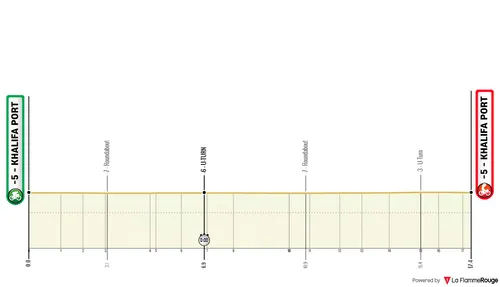
Stage 2 (TTT): Khalifa Port - Khalifa Port, 17.2 kilometers
Stage two will see the riders race a team time-trial. In 17.2 kilometers at Khalifa Port, teams will face each other in a day where the overall classification will take relative importance. The race will fully be within the port's roads, going back and forth in the area. There will then be plenty of changes of direction, but with no technical or tight sections, aswell as any gradients, it will be a day where the most organized teams will without a doubt benefit from.
Read also
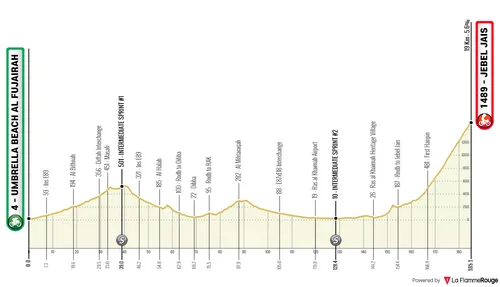
Stage 3: Umbrella Beach Al Fujairah - Jebel Jais, 185 kilometers
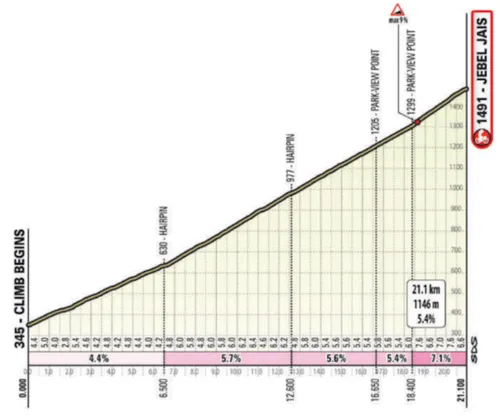
Jebel Jais: 21.1 kilometers, 5.4%
Stage three will see another battle for the overall classification. This one will be a flat day into Jebel Jais, not pan-flat as most of the previous ones as the riders climb around 500 meters of altitude within the opening kilometers, but without any meaningful climb. The riders will head north towards the mountains close to the Strait of Hormuz. There they will find a very twisty mountain road.
That is of Jebel Jais, a climb that has begun being used quite often in the last editions of the race, earning it's spot as the second summit finish after the UAE Tour cemented Jebel Hafeet as it's main attraction. This climb is a totally different beast however, as the gradients are constant and never overly high. The gradients start off quite gently, but in total the climb has over 21 kilometers in distance, averaging 5.4%.
And amazingly the gradients remain almost completely constant the whole way up the mountain. It reaches up to 7% towards the finale, but it's an ascent where the average speeds stay close to 30 kilometers per hour. Drafting is crucial, and attacking from far highly unlikely to succeed. Although it's a twisty road all of the hairpins are very long and don't actually allow for sudden accelerations to surprise. The final minutes of the ascent can make differences however as it's a decently long effort, and there will be important signs given between the riders who are fighting for the overall classification.
Read also
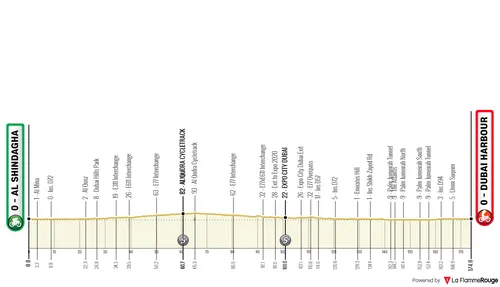
Stage 4: Al Shindagha - Dubai Harbour, 174 kilometers
Stage four sees the riders back into purely flat roads for another bunch sprint. It's another pan-flat day, just as the race usually delivers, and a reason why so many sprinters come down to the UAE. This one particularly rolls into Dubai, where the finale will specifically be at the Dubai Harbour.
It's far from a technical finale, as the riders make their way through the desert's urbanization. There will be a long right-hander with 800 meters to go leaving the riders in the finishing straight. It's a simple finish, leadouts will have only their power and strategy to blame if the plan doesn't work.
Read also
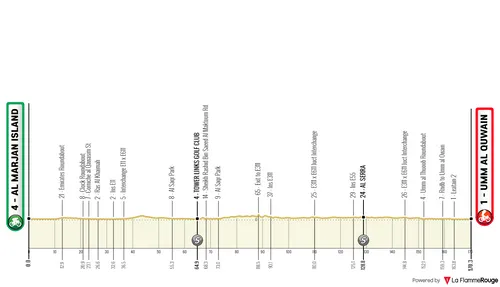
Stage 5: Al Marjan Island - Umm al Quwain, 182 kilometers
Stage five will be a similar day to the previous sprint days. The race organizers have created a route passing through the cities of the area, with plenty changes in direction over 182 kilometers to end in a city similar to all the other finishes, in Umm al Quwain.
And from the sprint all that can be expected is high speeds. There will be two roundabouts to take into consideration, with 1 and 2.5 kilometers to go respectively. Nevertheless it's a fully straightforward finale, ideal for the pure sprinters.
Read also
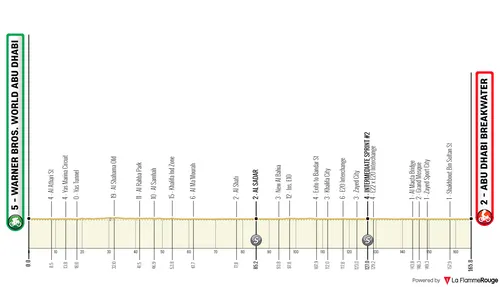
Stage 6: Warner Bros. World Abu Dhabi - Abu Dhabi Breakwater, 166 kilometers
Stage six will be another opportunity for the fast men, and the final one. This time around the peloton will be racing around the cities in Abu Dhabi, in a fourth day that features no climbing whatsoever and delivers the sprinters another well deserved opportunity to succeed.
The finale here into Doha is not unknown and it's a fairly simple one. No technical features at all are included within the final 1.5 kilometers, it's a simple and straight finale where the leadouts will be raising the speed in incredibly high fashion before the fast men launch their bid for victory.
Read also
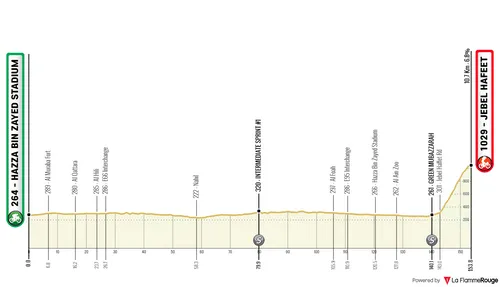
Stage 7: Hazza Bin Zayed Stadium - Jebel Hafeet, 153 kilometers
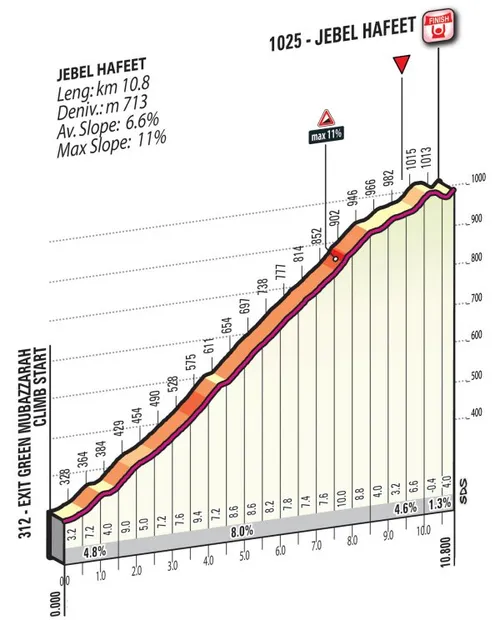
Jebel Hafeet: 10.8 kilometers, 6.6%
At last the riders face a climb. After three days of no climbing whatsoever, they will have a fourth day of racing in such roads, but will encounter the second and final mountaintop finish of the race. The queen stage, it will be the ascent to Jebel Hafeet - 10.8 kilometers at 6.6% - that will decide the race.
Aside from winds there is nothing to fear from the day. It's a short day on the bike with only 153 kilometers on the menu, but the final ascent dictates this to be the queen stage most likely. The numbers aren't brutal, but very often very big differences are created in the slopes of Jebel Hafeet. 10.8 kilometers at 6.6% are the official details, but the gradients aren't as consistent as Jebel Jais.
In it's middle 7 kilometers the grades average 8% consistently, reaching as high as 11% with some steep hairpins included. Usually the main moves happen there, in what is a wide, completely exposed road which adds to the difficulty. The final kilometers have a couple of flat and even downhill sections, with some steep ramps inbetween. The final sprint will be uphill, although the late final corner has in the past seen crashes so caution must be had.
Read also
claps 0visitors 0
Just in
Popular news
Latest comments
- I dont know about winning but he has certainly shown that he can lose one.abstractengineer19-12-2025
- Unfair points system!!!. Its the same system under which Virenque won 7 polka dots. But then he cheats so how can he call it unfair.abstractengineer19-12-2025
- Yes being favorites, being 3 to 1 and not winning is worst, 2nd time in history, both times Belgiansabstractengineer19-12-2025
- Uijtdebroeks is just a malcontent. he has never won anything. he will do nothing with Movistar. I would let Remco go for 7 million too. he's great, but not worth it. pay 10 million for Ayuso? also nuts.mij19-12-2025
- interesting Mads got 2nd at Flanders, and he isn't even mentioned by Wout LOL. makes me laugh how he is so overlooked.mij19-12-2025
- I think a 3 v 1 finish with the 1 being a good rider, but not great, is close to humiliation.mij19-12-2025
- These whiners simply want to keep their hold in the highest echelons of the sport without having to perform well enough to please their sponsors and remain there. Cycling has been "unsustainable" ...for 130 years! If Vaughters wants to leave the sport, there will be hundreds of teams happy to ride the Tour and the biggest races in the world in his place. That's what happens when there's a ton of supply of teams and a limited amount of demand for teams at the highest level! -An Economistacem8219-12-2025
- If she was Dutch or Belgian she'd have already sorted a team out. Unfortunately, the CX teams are pretty insular to 'foreigners' and would rather give a spot to a local rider. And that is one reason why the sport is niche outside its heartland.wipperman9519-12-2025
- Dear Editor: It is no humiliation to make the final, even with two riders, and not get it perfect against another talented rider. Disappointment, sure.itsent18-12-2025
- I luv this guy ,so honest puts the hand up ..."my fault.".. I would be stoked to see him win his big monuments ... i think he would be a great team mate and friend.Davide18-12-2025
Loading
BREAKING: The official UAE Tour Men's jerseys!
Write a comment
